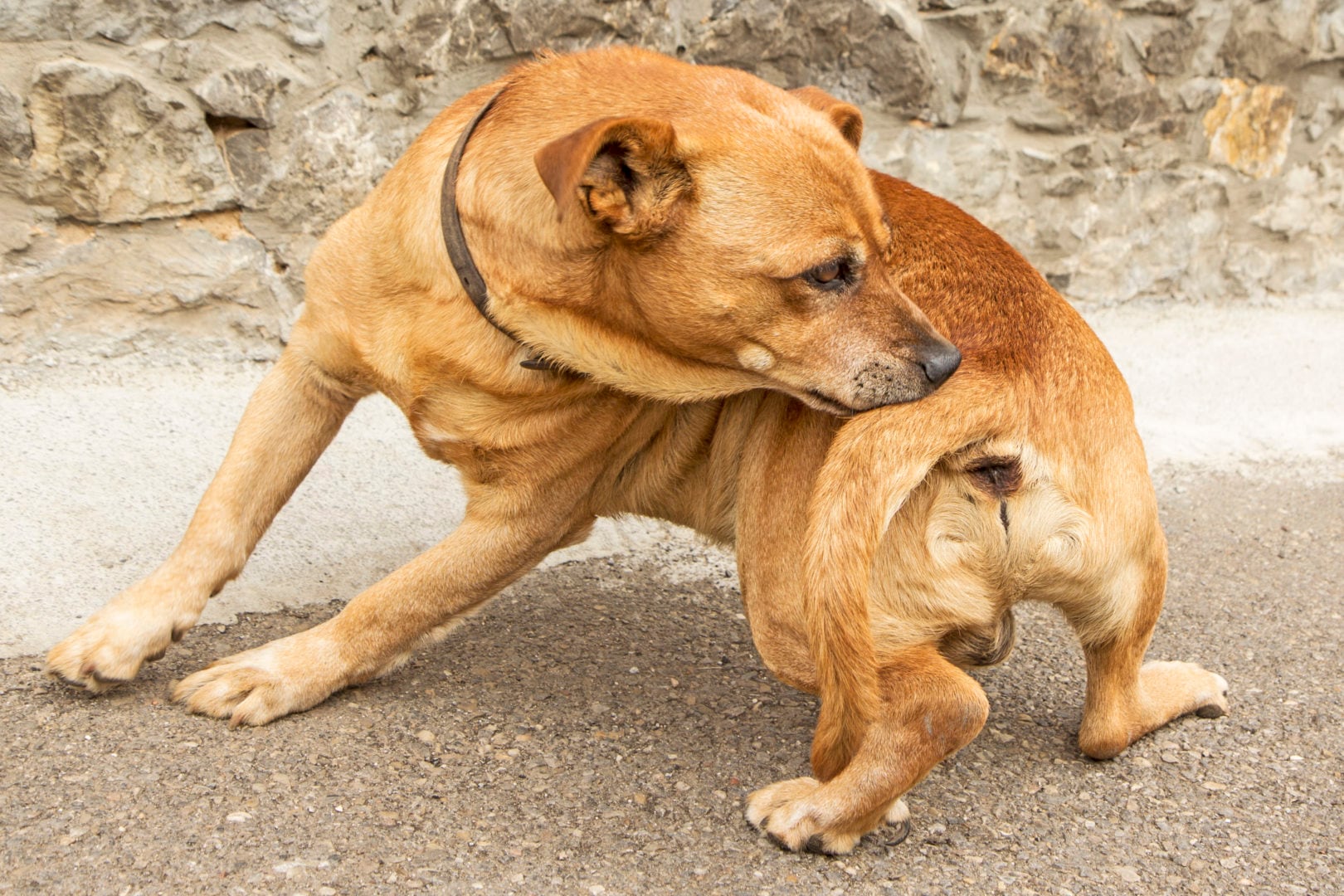Sure, they’re commonly known as hot spots, but in some cases, “hot mess” may be a more accurate description.
Hot spots are hot, sometimes oozing, moist, reddened lesions that appear on the skin of dogs, and as you probably guessed, they can be painful and itchy.
Excessive licking and chewing causes hot spots to spread and worsen quickly, starting a painful cycle for your pup.
“Hot spots typically start with a localized area of itching and irritation,” says veterinarian Dr. Chris Bern of A Vet’s Guide to Life. “This skin irritation leads to the dog scratching or chewing at the area, breaking the skin and leading to secondary skin infections. The infection and additional irritation leads to further itchiness, and therefore more intense chewing, and a larger area is created in a self-perpetuating cycle.”
Thankfully, there are ways to break the cycle of suffering. Read on to learn more about hot spots, including causes, professional treatments and home remedies.
What are hot spots on dogs?
Hot spots, more formally known as acute moist dermatitis, form when a dog chews or irritates broken skin, introducing bacteria that can cause a mild to moderate infection.
“Hot spots are an infection of the superficial layer of the skin,” explains San Diego veterinarian Dr. Jessica Vogelsang. “Dogs cause them by biting or licking their skin and breaching its natural defenses, allowing the bacteria normally present on the surface of the skin to invade.”
What causes hot spots?
While there are many causes of hot spots, the most common is allergies, says Dr. Chris Reeder, a veterinarian at BluePearl Veterinary Partners in Nashville, Tennessee, who is board-certified in dermatology.
Dogs that are being groomed frequently, says Reeder, and have a thick coat, like golden retrievers, can also accumulate soap from shampoo in their fur, which irritates them and eventually causes hotspots. So be sure to rinse thoroughly after a shampoo. (More about that later.)
An itchy flea or insect bite could also be the source of the initial skin irritation, adds Bern. Stressed or bored dogs, dogs with hip dysplasia or anal sac disease, can also be prone to hot spots, according to the ASPCA.
When should you go to the veterinarian?
It’s important to go to the vet if you don’t see improvement or if your dog has a fever or acts lethargic. A veterinarian can help determine the source of your dog’s hot spots, whether it’s allergies, insect bites or otherwise.
You should see a doctor “if there is bleeding, pus or excessive moisture [or] if the symptoms don’t improve within a day or two,” adds Bern. “Anything more than a small area of reddened skin should be looked at.”
How will a veterinarian treat my dog’s hot spots?
Your veterinarian will determine a treatment plan for your dog following an exam.
“Many of these cases require wound care with clipping excess hair, cleaning with antimicrobial scrub and application of topical antibiotics,” says Reeder. “Oral antibiotics are also often required to completely clear an infection along with anti-inflammatory medications.”
There are also products to help ease discomfort for your dog.
“Many topical products contain an anti-itch agent (e.g. steroid or antihistamine) or a numbing agent (e.g pramoxine, lidocaine), which may be purchased over the counter or at your local vet’s office,” Reeder says.
Home remedies for dog hot spots
If caught early, there are home remedies that could provide some quick relief for a small or mild hotspot. Bern recommends giving your dog calming oatmeal baths.
“They can be very soothing to the skin and are a good treatment for mild cases,” he says.
The Spruce Pets recommends steeping a tea bag — black tea, not herbal — in hot water, cooling it thoroughly, placing it against the hot spot, and repeating several times a day. Tea has antibacterial qualities and can help dry out the sore.
Homeopathic expert Dana Scott, of Dogs Naturally Magazine, recommends remedies such as “belladonna, graphites, mercurius and rhus tox.”
“You could also spray calendula tincture on the hot spot,” she says. “I’ve found these remedies to be so effective that shaving [the area to prevent mats] is rarely necessary.”
How do you prevent hot spots?
The ASPCA recommends that you make sure your dog is groomed on a regular basis to prevent hot spots. Keeping your pet’s hair clipped short, especially during warmer months, can also help.
If you groom your dog yourself, Reeder adds: “A good rule of thumb is to rinse the hair coat twice, as long as it took to shampoo the pet, to ensure complete removal of the product. A complete drying of the hair coat is also helpful.”
To keep insects away, ask your veterinarian about a flea control program and stick to it. Make sure your dog gets plenty of exercise and playtime to combat boredom and stress, the ASPCA says, which can be a factor in excessive biting of the skin.



